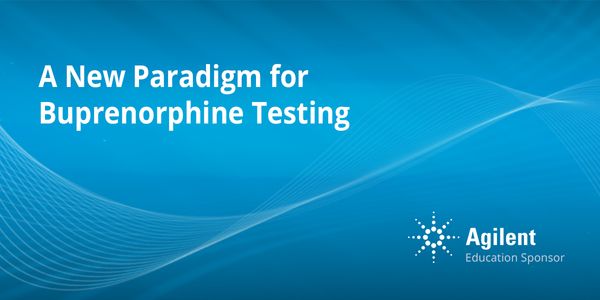Opioids
Opioids are a class of drugs naturally found in the opium poppy plant. Some prescription opioids are made from the plant directly, and others are made by scientists in labs using the same chemical structure. Opioids are often used as medicines because they contain chemicals that relax the body and can relieve pain. Prescription opioids are used mostly to treat moderate to severe pain, though some opioids can be used to treat coughing and diarrhea. Opioids can also make people feel very relaxed and "high" - which is why they are sometimes used for non-medical reasons. This can be dangerous because opioids can be highly addictive, and overdoses and death are common. Heroin is one of the world's most dangerous opioids, and is never used as a medicine in the United States.
-
NOV 15, 2018 | 1:30 PMIn 2017, the Washington State Legislature passed HB 1427, which mandated that boards and commissions for five prescribing professions (dental, medical, nursing, osteopathic, and podiatric) en...Speaker: Blake Maresh, MPA, CMBENOV 15, 2018 | 12:00 PMQIAGEN helps your team focus on the opportunities, not the obstacles, with an end-to-end clinical testing solution. During this talk, we will present a lung cancer case study to show how QIAG...Speaker: Raed Samara, PhD , Dan Richards, PhDNOV 15, 2018 | 12:00 PMDrug overdose surpassed motor vehicle accidents as the leading cause of accidental death 2006 and has remained the leading cause of accidental death at the state and national level. Mos...NOV 15, 2018 | 10:30 AMCervical cancer is the 4th most common cancer worldwide with 528,000 new cases and 266,000 deaths every year. It is also the only cancer 100% preventable. It has been extensively proved, that...Speaker: Chris Meijer, MD, PhDNOV 15, 2018 | 10:30 AMThe main problem for insufficient cervical cancer screening globally (less than 20% women at risk) is outreach failure. Enabling POCs with modern IT/mobile technology and connecting them with...Speaker: Olivera Markovic, MD, PhDNOV 15, 2018 | 9:00 AMClinical testing with next generation sequencing requires a complex bioinformatics pipeline to process raw DNA sequence into interpretable variants for medical reporting. With sequencin...NOV 15, 2018 | 7:30 AMPoint-of-care testing (POCT) allows for prompt clinical interventions by returning fast and reliable results near patients. This important role in patient management has led to the widespread...Speaker: Brenda Suh-Lailam, PhDNOV 15, 2018 | 6:00 AMThis presentation will review the scope and history of the chronic pain and opioid epidemic in the US. It will then discuss how chronic pain and opioid use is being dealt with in commun...Speaker: Carissa van den Berk-Clark, PhDNOV 14, 2018 | 1:30 PMSecond and third generations of PTH immunoassays currently available on the market demonstrate significant variability with up to 4.2 fold difference in measurements depending on the method u...Speaker: Ravinder Singh, PhDNOV 14, 2018 | 12:00 PMAs the compendium of putatively disease causing variants expands, gathering the most current and accurate information is critical to computing variant classifications. The QIAGEN knowledgebas...Speaker: Jennifer Poitras, PhDNOV 14, 2018 | 10:30 AMDecades of innovation have brought us into a new era of mass spectrometry with the design of Agilent’s revolutionary Triple Quadrupole LC/MS. Ultivo is packed full of the same power and...Speaker: Julie Cichelli, PhDNOV 14, 2018 | 9:00 AMWith significant decrease in the cost of sequencing in numerous commercial as well as cancer center–driven initiatives, genomic profiling is increasingly becoming routine across multipl...Speaker: Bing Zhou, PhDNOV 14, 2018 | 7:30 AMAs the diagnostic test menu has increased in size and complexity, healthcare providers are in great need of advice on appropriate test selection and result interpretation. To address this nee...Speaker: Michael Laposata, MD, PhDSEP 05, 2018 | 8:00 AMDATE: September 5, 2018TIME: 8:00AM PDTA New Paradigm for Buprenorphine TestingBuprenorphine (BUP) is a partial mu-agonist synthetic opioid, an important drug for treating opio...JUN 20, 2018 | 10:30 AMWith nearly 9 million covered lives serviced through over 150 medical centers, the VA is one of the largest, unified Healthcare System within the United States. Embedded within this system is...Speaker: Laurence Meyer, MD, PhD , Ronald Przygodzki, MDPresented at: Precision Medicine Virtual Event Series 2018
MAR 29, 2018 | 12:00 PMIt has only been in the last 20 years that we, the scientific/medical community, have appreciated the role of the endogenous Cannabinoid system (ECS) in maintaining a healthy immune system an...MAR 28, 2018 | 6:00 AMPain management is the most commonly reported reason for seeking medical cannabis, which is associated with lower opioid use, fewer medication side effects and better quality of life in patie...Speaker: Kenton Crowley, Pharm. D., FAARFM, ABAAHPPresented at: Cannabis Sciences Virtual Event Series 2018
FEB 08, 2018 | 10:30 AMAnalgesics are commonly employed drugs for perioperative procedures and are required for painful procedures. They include not only non-steroidal anti-inflammatory drugs (NSAIDs) but also opio...Speaker: Ignacio Alvarez Gomez de Segura, DipECLAM, DipECVAAPresented at: Laboratory Animal Sciences Virtual Event Series 2018
NOV 09, 2017 | 9:00 AMAcute and chronic pain are often managed with drug therapy, which may include extended use of drug classes such as opioids and benzodiazepines. Pain does not go away, and may intensify...Speaker: Gwen McMillin, PhDNOV 08, 2017 | 12:00 PMNovel psychoactive substances (NPS) emerged in the United States around 2000. Initially, synthetic cannabinoids and stimulants prevailed. Now, designer opioids, benzodiazepines an...Speaker: Robert Middleberg, PhDNOV 02, 2016 | 12:00 PMIn the past several years, there has been an increase in drug testing associated with chronic pain. Immunoassays are the most common method for initial screening which can test for a specific...Speaker: Nihmat Morjana, Ph.D., M.Sc.NOV 02, 2016 | 10:30 AMWith increasing emphasis on effective pain management in clinical care, there has been a significant increase in the number of opioid prescriptions in the past decade. While these drugs...Speaker: William Clarke, PhD, MBA, DABCCNOV 02, 2016 | 6:00 AMChronic pain is a major problem in most countries. Specialized pain management physicians often see and treat patients with chronic pain, and one type of therapy that may be prescribed is an...Speaker: Jennifer Colby, PhD, DABCC, FACBOCT 11, 2016 | 8:00 AMDATE: October 11, 2016 TIME: 8:00am PT, 11:00 ET Chronic Renal Dysfunction (CKD) and Acute Kidney Injury (AKI) are increasing in prevalence today and can be escalated due to d...
























